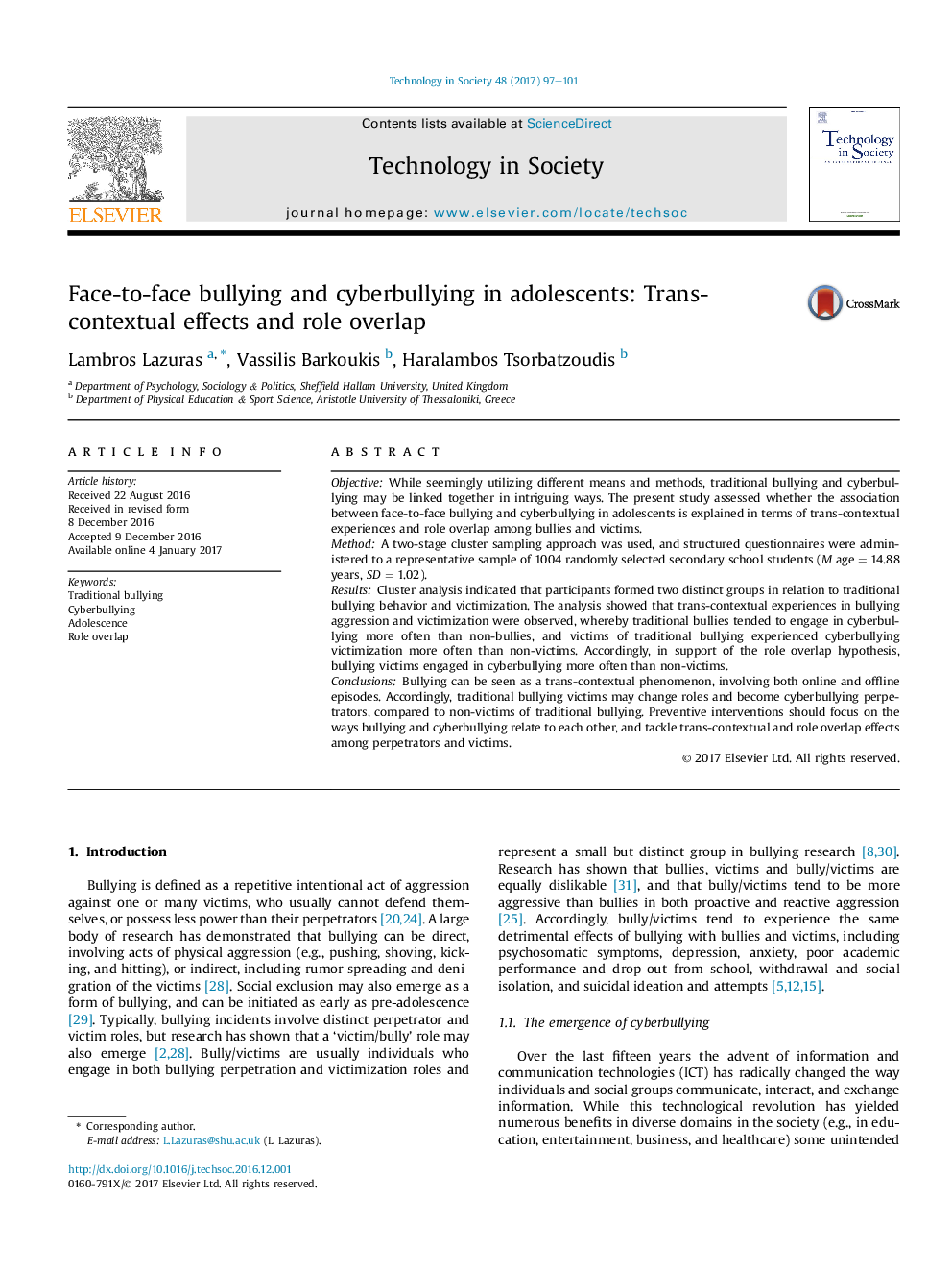| Article ID | Journal | Published Year | Pages | File Type |
|---|---|---|---|---|
| 4941806 | Technology in Society | 2017 | 5 Pages |
â¢Cyberbullying is more likely to occur among traditional bullies than non-bullies.â¢Cyber-victimization is more likely to occur among victims of traditional bullying than non-victims.â¢Victims of traditional bullying may change role and become cyberbullying perpetrators.â¢Interventions against perpetration and victimization should tackle both trans-contextual effects and role overlap.
ObjectiveWhile seemingly utilizing different means and methods, traditional bullying and cyberbullying may be linked together in intriguing ways. The present study assessed whether the association between face-to-face bullying and cyberbullying in adolescents is explained in terms of trans-contextual experiences and role overlap among bullies and victims.MethodA two-stage cluster sampling approach was used, and structured questionnaires were administered to a representative sample of 1004 randomly selected secondary school students (M age = 14.88 years, SD = 1.02).ResultsCluster analysis indicated that participants formed two distinct groups in relation to traditional bullying behavior and victimization. The analysis showed that trans-contextual experiences in bullying aggression and victimization were observed, whereby traditional bullies tended to engage in cyberbullying more often than non-bullies, and victims of traditional bullying experienced cyberbullying victimization more often than non-victims. Accordingly, in support of the role overlap hypothesis, bullying victims engaged in cyberbullying more often than non-victims.ConclusionsBullying can be seen as a trans-contextual phenomenon, involving both online and offline episodes. Accordingly, traditional bullying victims may change roles and become cyberbullying perpetrators, compared to non-victims of traditional bullying. Preventive interventions should focus on the ways bullying and cyberbullying relate to each other, and tackle trans-contextual and role overlap effects among perpetrators and victims.
